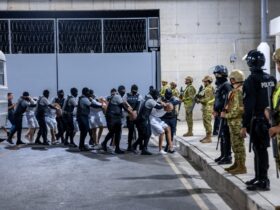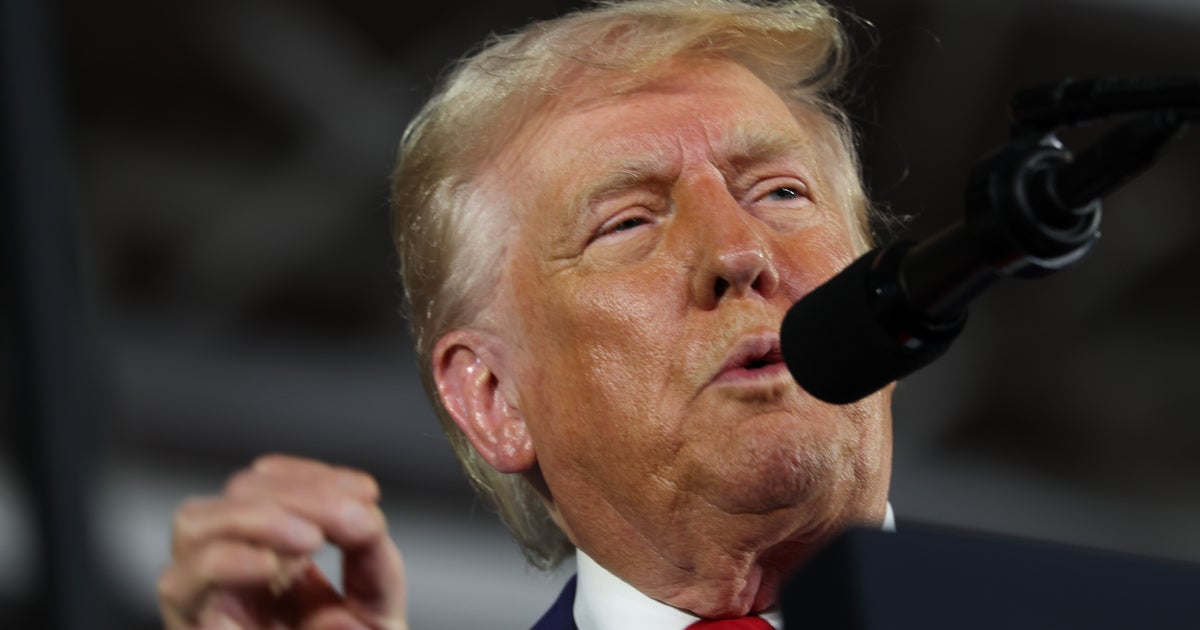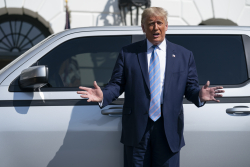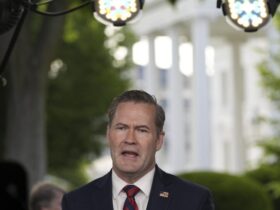Federal labor unions find themselves in a fight for survival just 100 days into Donald Trump’s presidency.
The new administration has attacked collective bargaining as it fires workers and shrinks or eliminates federal departments by fiat. It has tried to gut key agencies that enforce labor rights for federal workers. It has ignored union contracts negotiated by Trump’s predecessor. And it has moved to shut off paycheck dues deduction in order to starve unions of their funding.
In its most brazen move, the White House has tried to strip union protections from up to 1 million federal employees, on the dubious grounds that they work primarily in “national security.” If the administration succeeds, collective bargaining agreements could be thrown out at more than a dozen agencies and departments, making it much easier to fire people without due process.
According to labor historian Joseph McCartin, Trump’s actions could turn out more destructive to federal unionism than Ronald Reagan’s infamous breaking of the air-traffic controllers’ strike in 1981, a monumental defeat that still hangs over the U.S. labor movement.
“I think, like all of us, [the unions] have been caught by surprise by the extent of the aggression, and just how far the administration has gone,” said McCartin, who wrote a book on the PATCO strike and teaches at Georgetown University. “I don’t think anybody understood where this was going to be at this point.”
This story is part of HuffPost’s commitment to fearlessly covering the Trump administration. You can support our work and protect the free press by contributing to our newsroom.
Most federal workers have been eligible to bargain collectively since 1962, though their unions’ powers are limited. They cannot negotiate directly over pay and benefits, and are forbidden from going on strike. But they provide strong job security, and protect workers from arbitrary discipline and firings, which puts them at the center of Trump’s historic assault on the bureaucracy.
“We can’t look at this as some bureaucrats losing their ability to make their boss’ life inconvenient. This is a concrete step to destabilize our government.”
– Colin Smalley, president of IFPTE Local 777
Unions have filed so many lawsuits aimed at blocking legally shaky White House policies that it can be hard to keep track of them all: They have challenged Trump’s efforts to dismantle agencies, to access the sensitive data of workers and retirees, to lay off probationary workers en masse, to push employees into early retirement and to politicize the civil service.
But unions have also helped organize some of the huge rallies that have popped up in cities around the country to protest the Trump agenda. And federal employees have been turning to their local union representatives to advise them on how to respond to the Trump administration’s latest demands.
Lauren Leib, a Bureau of Land Management employee and the head of her union chapter, National Treasury Employees Union Local 340 in New Mexico, said the White House wants to kneecap federal labor groups because they’re an obstacle to unlawful firings and privatization. Indeed, when explaining its policy curbing collective bargaining rights, the administration noted that “certain unions” had “declared war on President Trump’s agenda.”
“It’s very obvious what they’re trying to do,” said Leib, who spoke to HuffPost in her capacity as a union official. “[The administration] knows we fight, and they know it’s in the public interest. We’re fighting to keep people in these positions so they can continue to serve and they don’t like it.”
Nathan Posner/Anadolu via Getty Images
Though unions expected Trump to try to eliminate collective bargaining for some workers, his executive order turned out far broader than many anticipated, encompassing agencies like the Environmental Protection Agency, the Department of Veterans Affairs and the Interior Department.
Leib, who works as a land law examiner on oil and gas lands, would lose her union protections under the premise her primary role is national security ― a rationale she finds absurd.
“Some of my members are park rangers, recreation specialists, botanists,” she explained. “We’re not national security. We don’t engage in counterintelligence.”
On Friday, Leib’s union won an injunction temporarily blocking the executive order from being implemented. Other unions have filed a similar lawsuit on the grounds the order is illegal and retaliatory.
Matt Biggs, president of the International Federation of Professional and Technical Engineers, argues Trump’s policy will end up undermining national security by destabilizing the workforce. His union represents workers in Navy shipyards, as well as at the National Aeronautics and Space Administration, and the Army Corp of Engineers, among other agencies.
“Our members prepare these ships and subs to go out to sea; they do it on schedule and under budget,” Biggs said. “We have for decades had a very strong and productive partnership with management.”
“Our unions are going nowhere,” he added. “Donald Trump is proving to be the best organizer.”
Federal unions have added thousands of new members since Trump’s election, but at the same time they are losing many others due to resignations and layoffs. The largest federal union, the American Federation of Government Employees, recently said it plans to lay off more than half of its staff despite already surpassing its initial organizing goal for 2025.
The AFGE attributed the staff cuts in part to the Trump administration blocking union dues deduction from workers’ paychecks. Expecting such a move from the White House, unions have spent recent months trying to switch members over to paying dues through bank drafts.
“Federal unions have added thousands of new members since Trump’s election, but at the same time they are losing many others due to resignations and layoffs.”
Federal unions have a high ceiling for growth in part because so many workers have historically chosen not to be members. By law, federal workplaces are “open shops,” meaning no one can be required to pay union dues even if they are covered by the contract. The bar against striking or even negotiating over pay can make it difficult to mobilize federal workers compared to their private-sector counterparts.
It remains to be seen whether Trump’s aggression will provide lasting fuel for federal unions to grow in size and militancy.
Colin Smalley, an Army Corps geographer and head of IFPTE Local 777 in Chicago, said membership in his union has more than doubled since November, with more than half of the 300 workers now paying dues. The union has even brought on associate members who are not covered by the contract but choose to chip in anyway. Many workers are considering filing for their own union elections, according to Smalley.
“This is happening all over,” he said. “Even people who haven’t had a union before are absolutely aware of why they need it. And they’re coming to us as well.”
Like Leib, Smalley is part of an informal group called the Federal Unionists Network, which is trying to get rank-and-file federal employees more involved in their unions. The group sprouted up in the wake of the 2018-19 government shutdown Trump instigated during his first presidency. It’s been organizing pickets to rally support for federal workers, which could be key to surviving the Trump era.
Smalley said it was important that the general public see the attacks on federal unions as part of Trump’s broader undermining of democratic norms.
“We can’t look at this as some bureaucrats losing their ability to make their boss’ life inconvenient,” he said. “This is a concrete step to destabilize our government.”
So far, unions’ biggest counterattacks have been through the courts. After all, any strikes would be illegal and risky: Trump is looking for any reason to fire federal employees, and in most cases would welcome them withholding their labor.
But McCartin cautioned that no union should bank on the judiciary or the Congress stepping in to save them.
He said it might be time for some unions to reevaluate what they’re comfortable with doing. To give one example, he floated the idea of fired federal employees showing up at the office and insisting to work on important projects, risking arrest for trespassing ― a collective action that could maybe engender public support. He acknowledged he doesn’t know if it would work.
“But it’s time for people to be creative,” he said. “The traditional playbooks are all torn up. They don’t apply. It’s a radically new situation, and it needs to be responded to in new and creative ways.”
















Leave a Reply